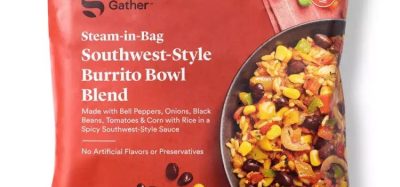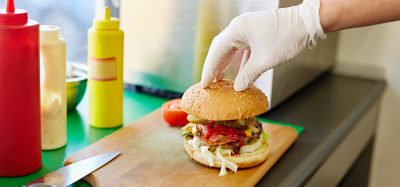A UK food allergy update
Posted: 7 September 2020 | Dr Hazel Gowland | 1 comment
Dr Hazel Gowland provides a UK food allergy update, outlining the research taking place, new labelling legislation, the challenges lockdown presented, and some practical guidance as restrictions start to lift.


Spring 2020 was hectic in the world of food allergy – a steady round of invitations to lecture, train and comment on a range of issues.
We were, of course, also waiting for the outcome of ‘Natasha’s Law’ and eventual guidance from the Food Standards Agency (FSA). There had been an increase in local authority activity to improve allergen controls and several prosecutions. The debate continued on Food Hygiene Ratings and the inclusion of controls to ensure that allergen information is correct and available, and to prevent cross contamination.
Those monitoring the integrity of the food supply chain continued to identify potential food fraud risks, some of which might have implications for allergen avoidance. And the possible implications of transport, logistical delays and pressure to change food standards following our departure from the European Union were also being hotly debated.
Spring 2020 was hectic in the world of food allergy – a steady round of invitations to lecture, train and comment on a range of issues.
We were, of course, also waiting for the outcome of ‘Natasha’s Law’ and eventual guidance from the Food Standards Agency (FSA). There had been an increase in local authority activity to improve allergen controls and several prosecutions. The debate continued on Food Hygiene Ratings and the inclusion of controls to ensure that allergen information is correct and available, and to prevent cross contamination.
Those monitoring the integrity of the food supply chain continued to identify potential food fraud risks, some of which might have implications for allergen avoidance. And the possible implications of transport, logistical delays and pressure to change food standards following our departure from the European Union were also being hotly debated.
Research to reduce risks and improve lives
Understanding who may become food allergic and how they may be sensitised has been the focus of many clinical studies since the 1990s. Some mechanisms have been identified, for example, a genetic mutation leading to the lack of the protein filaggrin in the skin resulting in eczema and the possibility of sensitisation to allergens including foods via broken skin.
It is now widely recognised that food allergy may be prevented in potentially food allergic babies if they are given allergenic foods in safe form from about four months. Large UK cohorts of babies were involved in several studies, including the LEAP Study (Learning Early About Peanut) and the EAT Study (Enquiring About Tolerance) which experimented with included certain foods such as peanuts, cod and egg into weaning diets.
Understanding who may become food allergic and how they may be sensitised has been the focus of many clinical studies since the 1990s
Guidance on early feeding for allergic babies is available in the Allergy UK Weaning Support Pack here: http://tiny.cc/2aoksz and a quick guide is accessible here: http://tiny.cc/5aoksz.
For those who have been sensitised to food allergens and for whom prevention is now too late, work is underway to improve strategies to develop tolerance by consuming small and then increasing amounts of the food under clinical supervision. This is time-consuming, requiring patience, family support and sometimes minor reactions, including nausea and tummy ache. It can also be expensive, occasionally involving regular travel to specialist centres and private healthcare.
Some immunotherapy involves everyday food. Food allergens such as egg or milk may be safer to introduce in baked form in which some of the proteins have been broken down, working eventually towards consuming the normal unbaked form. For some foods, pharmaceutical products have been developed – carefully calibrated and increasing doses of peanut flour in capsules taken daily over a number of months can at least reduce the potential severity of any symptoms, if not fully enable regular safe consumption of peanut.
Non gastro-intestinal routes for immunotherapy now include skin patches (with increasing doses of the food allergen) and sublingual therapies (under the tongue). In some centres, ‘biologics’ are used to support immunotherapy. These are medicines which can limit symptoms temporarily, whilst the immune system adjusts to allergen exposure. Further work continues to understand how and whether tolerance remains or is reduced if consumption stops for a period of time.
The EAACI Congress included updates on developments in immunotherapy and the use of biologics, as well as further understanding of the gut microbiome in the development of allergy. Presentations also included the possible over‑diagnosis of cow’s milk protein allergy in babies, and the key role of dietitians in ensuring adequate nutrition for babies, children and some adults avoiding key food allergens.
Catering suppliers were obliged to adapt
Looking to the future, the programme addressed the environmental impact of climate change on people with allergies and asthma. Increasingly recognised is the stress of living with food allergy and the impact of surviving reactions. Further work continues to understand and improve the quality of life in children, parents and carers, and adults with food allergy.
It is recognised that teenagers and young adults are at particular risk from severe and fatal allergic reactions as they grow up. This is partly physical; as their bodies develop, their reactions may change, and they may be unfamiliar with new and potentially severe symptoms. At the same time, they are living more independent lives, travelling and eating away from the home – sometimes with new friends and not necessarily experienced in managing symptoms in an emergency.
In 2018, EAACI commissioned a Task Force to investigate and develop a Guideline and resources for health care professionals responsible for teenagers and young adults. It aims to ensure that they can transition effectively from the support and patient care provided by their paediatric clinics to adult healthcare services. Short films about this work are available here: http://tiny.cc/5boksz.
New guidance from the Food Standards Agency: Natasha’s Law
In October 2021, a key change in food labelling law will require food businesses in England preparing and packing foods on site for display and customer selection to be labelled with ingredients and allergen information. This follows the death of Natasha Ednan-Laperouse from unlabelled sesame in the dough of a baguette in 2016. On 18 June 2020, the FSA published updated technical guidance to support this change.1 Natasha’s parents have been tireless in raising awareness of the risks to young people with food allergies and the shortcomings of some food labelling. They have now established Natasha Allergy Research Foundation to support further research.
Allergies during lockdown
As we are all now well aware, the food supply chain was forced to adapt very quickly following lockdown. Approximately half of our food which would normally be supplied through catering, hospitality and other ready-to-eat routes, as well as takeaways and deliveries, was reduced overnight.
Near dependence on supermarket products led to shortages and difficulties obtaining regular ‘free-from’ products, which many people with food hypersensitivity – allergies, intolerances and coeliac disease – depend. This was a particular challenge for those needing gluten- and wheat-free flours and milk alternatives. It took some time for those shielding to be prioritised for delivery services, but following an intervention by the Anaphylaxis Campaign, Allergy UK and the British Society for Allergy and Clinical Immunology, stocks of free-from foods started to be reserved for those dependent on them. On the plus side, more time at home provided opportunities for cooking and baking – invaluable life skills, particularly for those with food hypersensitivity and their friends and families.
Catering suppliers were obliged to adapt; fresh fruit, vegetables, salad items and other products which would have been delivered to local hotels and restaurants were repackaged and weekly street deliveries organised with online advance payment. Community projects and food banks accepted wholesale supplies which were decanted and delivered to those shielding or in need. This led to some challenges for food hypersensitive people – unfamiliar products, kindly given, but sometimes without the necessary ingredients, allergen or ‘may contain’ information.
Emerging from lockdown: some practical tips
As food businesses re-open and implement the necessary controls for COVID-19, it is essential that they continue to protect food hypersensitive consumers by ensuring that staff are trained to provide allergen information when needed and control allergen cross-contamination throughout their supply chains.
Considerations when re-opening or changing to takeaway/delivery include:
- Ensuring that new and returning staff are trained to provide allergen information and control allergen risks
- Checking that ingredients and allergen information for new or substitute supplies is correct and available
- Encouraging customers to ask – especially if menus and dishes have changed
- Considering the choice available for people with allergies, intolerances, coeliac disease, especially with a reduced menu
- Remembering that gloves (if used) should be for just one job – to prevent allergen and infection spread
- Reviewing procedures, eg if staff at tables are no longer allowed to talk face-to-face to staff in the kitchen, how will allergen communication work?
- Ensuring that online ordering, eg via an app, enables ingredients and allergen data provision and fine-tuning of allergen requirements
- Considering whether cleaning/segregation may also reduce allergen risks.
Reference
1. www.food.gov.uk/news-alerts/….
About the author
Dr Hazel Gowland has had severe allergies to nuts and peanuts since early childhood. She was involved in shaping the Anaphylaxis Campaign from 1994 and established Allergy Action, a research and training consultancy, in 2000. She works with consumers, food businesses and regulators to support best practice and reduce risks. She is a member of the Scientific Committee of the IFST and the Food Special Interest Group of the RSPH. She also lectures on MSc programmes at Southampton University, Imperial College, and the University of Kingston. In 2019 she joined the Expert Group of the Safefood Knowledge Network for Ireland. Current and future projects include studies into the quality of life and cost of living with food allergy, and on-going epidemiological work to understand and record severe and fatal reactions and the forensic context of food allergy.
Issue
Related topics
Allergens, COVID-19, Food Safety, Health & Nutrition, Packaging & Labelling, Regulation & Legislation, The consumer
Related organisations
Allergy Action, Allergy UK, Anaphylaxis Campaign, Food Standards Agency (FSA)










was searching for some good article about food allergens and my search ended up here. Thank you for writing on this topic and sharing.